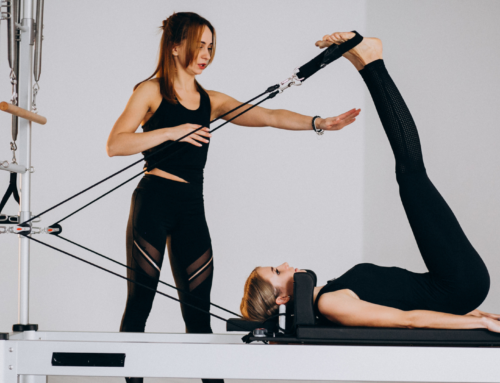Golfer’s elbow, medically known as medial epicondylitis, is a common condition that affects not only golfers but also individuals engaged in repetitive gripping and wrist bending activities. This debilitating condition, characterized by pain and inflammation on the inner side of the elbow, can significantly impact one’s ability to perform daily tasks and enjoy favorite activities. In this comprehensive blog post, we will explore the causes, description, and various treatment options for golfer’s elbow, with a focus on how physiotherapy can play a crucial role in the recovery process.

Understanding Golfer’s Elbow:
Golfer’s elbow is a type of tendonitis that occurs when the tendons on the inner side of the elbow become inflamed and irritated. These tendons connect the forearm muscles to the bony bump on the inside of the elbow (medial epicondyle). While the name suggests it’s prevalent among golfers, it can affect anyone who performs repetitive wrist flexion, gripping, or throwing motions.
Causes of Golfer’s Elbow:

- Repetitive Movements: Engaging in activities that involve repetitive gripping, wrist flexion, or twisting motions can strain the tendons on the inner side of the elbow. This is common in sports like golf, tennis, baseball, and weightlifting, as well as occupations that require repetitive hand and wrist movements.
- Poor Technique: Improper technique or form during sports or activities can increase the risk of developing golfer’s elbow. Overuse of the wrist and forearm muscles without proper training or guidance can lead to strain and inflammation of the tendons.
- Muscle Imbalance: Imbalances in muscle strength or flexibility between the forearm muscles can contribute to the development of golfer’s elbow. Weakness in certain muscles or tightness in others can increase stress on the tendons, leading to injury.
- Age and Degeneration: As individuals age, tendons become less elastic and more prone to degeneration. This can make older adults more susceptible to developing golfer’s elbow, especially if they engage in repetitive activities.
- Previous Injuries: Individuals who have previously experienced elbow or wrist injuries may be at a higher risk of developing golfer’s elbow. Scar tissue or weakened tendons from previous injuries can predispose individuals to further strain and inflammation.
Description of Golfer’s Elbow Symptoms:

Golfer’s elbow typically manifests as pain and tenderness on the inner side of the elbow, near the bony bump. The pain may radiate down the forearm and worsen with gripping, lifting, or bending the wrist. Other common symptoms include stiffness in the elbow joint, weakness in the forearm muscles, and difficulty performing everyday activities such as shaking hands or turning a doorknob.
Treatment for Golfer’s Elbow:
- Rest and Activity Modification: The first step in treating golfer’s elbow is to rest the affected arm and avoid activities that exacerbate symptoms. Modifications to daily activities or sports may be necessary to allow the tendons to heal.
- Ice and Compression: Applying ice packs to the affected area can help reduce pain and inflammation. Compression with a bandage or brace may also provide support and alleviate discomfort.
- Non-Steroidal Anti-Inflammatory Drugs (NSAIDs): Over-the-counter NSAIDs like ibuprofen or naproxen can help relieve pain and reduce inflammation. However, long-term use should be monitored, and individuals should consult with a healthcare professional.
- Physical Therapy: Physiotherapy plays a vital role in the treatment of golfer’s elbow, offering a holistic approach to rehabilitation. Physiotherapists use a combination of techniques to address pain, improve flexibility, strengthen muscles, and correct biomechanical issues.
- Stretching and Strengthening Exercises: Physiotherapists prescribe specific stretching and strengthening exercises to target the muscles and tendons involved in golfer’s elbow. Stretching helps improve flexibility and reduce tension in the muscles, while strengthening exercises build endurance and stability.
- Manual Therapy: Hands-on techniques such as massage, joint mobilization, and soft tissue manipulation can help alleviate muscle tension, improve blood flow, and promote healing in the affected area.
- Ultrasound Therapy: Ultrasound therapy uses high-frequency sound waves to stimulate blood flow and accelerate tissue repair. This non-invasive treatment can be effective in reducing pain and inflammation associated with golfer’s elbow.
- Bracing and Splinting: Wearing a brace or splint can help provide support and reduce stress on the injured tendons. These devices are typically worn during activities that may exacerbate symptoms or during periods of rest to promote healing.
- Activity Modification and Ergonomic Adjustments: Physiotherapists provide guidance on modifying activities and making ergonomic adjustments to prevent further strain on the affected tendons. This may include changes to equipment, posture, or technique.
- Gradual Return to Activity: As symptoms improve, physiotherapists guide individuals through a gradual return to their usual activities or sports. This phased approach helps prevent reinjury and allows for a safe and sustainable recovery.
Golfer’s elbow may present challenges, but with the right treatment approach, individuals can overcome pain and regain function in the affected arm. Physiotherapy stands as a cornerstone in the recovery process, offering a comprehensive and personalized approach to rehabilitation. By addressing pain, improving flexibility, strengthening muscles, and optimizing biomechanics, physiotherapists empower individuals to navigate the road to recovery with confidence. Remember, seeking timely treatment and adhering to a structured rehabilitation plan are key to overcoming golfer’s elbow and returning to the activities you love.






